The new Policy Address announced the construction of “three railways and three major roads”, which together with the planned Lantau Tomorrow Vision and Northern Metropolis projects, herald a new infrastructure boom in Hong Kong over the next 10 to 20 years. What positive effects will they have on Hong Kong’s economic and social development in the future? How can they promote Hong Kong’s further integration into overall national development?
Ling Kar-kan: Develop Forward-looking Plan for Integrated Development with the Greater Bay Area
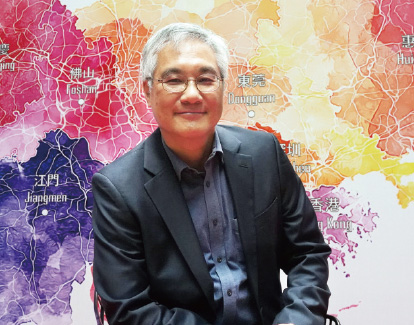
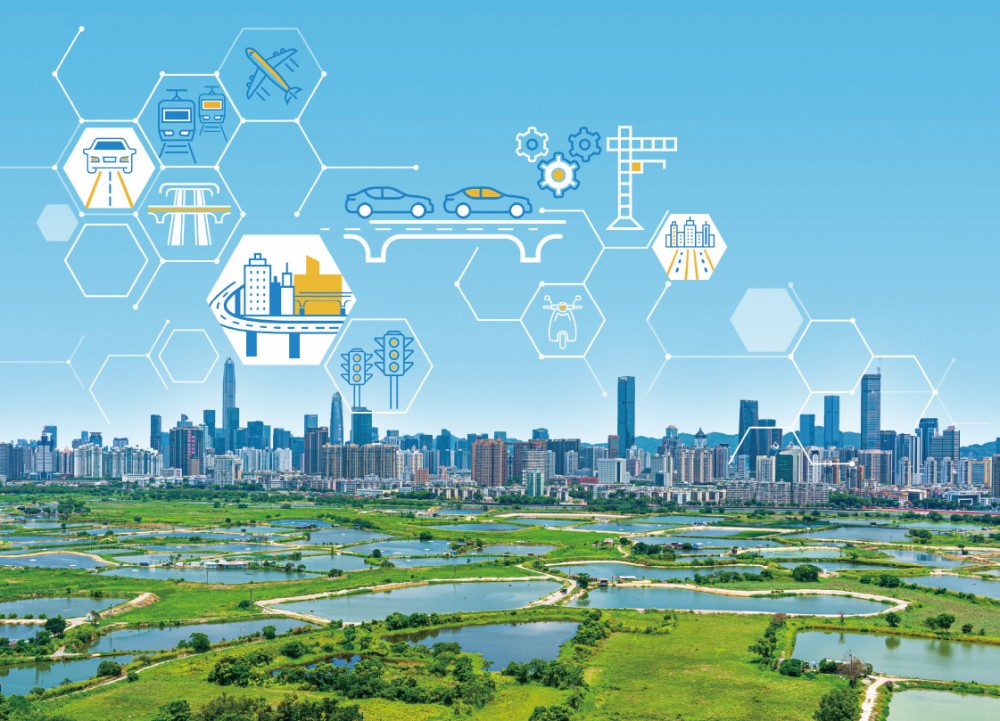 Regarding the land and housing shortages that have long been plaguing Hong Kong, Ling Kar-kan, Honorary Professor of the Department of Urban Planning and Design of the University of Hong Kong and Former Director of the Planning Department, said that the Government must persevere in land production. He further said that the final report on Hong Kong 2030+ has given estimates of Hong Kong’s long-term land demand and supply, and clearly stated the construction of two metropolises: the Harbour Metropolis and the Northern Metropolis.
Regarding the land and housing shortages that have long been plaguing Hong Kong, Ling Kar-kan, Honorary Professor of the Department of Urban Planning and Design of the University of Hong Kong and Former Director of the Planning Department, said that the Government must persevere in land production. He further said that the final report on Hong Kong 2030+ has given estimates of Hong Kong’s long-term land demand and supply, and clearly stated the construction of two metropolises: the Harbour Metropolis and the Northern Metropolis.
Persevere in land development
“This report, while spanning several administrations, has been very consistent in the direction of land development, that is, future land supply will mainly come from the Northern Metropolis and the Lantau Tomorrow Vision projects. The most important thing next is how to get them to fruition.” Ling added that the residential land in the Northern Metropolis has a maximum plot ratio of 6.5 as the guiding principle. Its density is higher than that of the first generation of new towns, and together with the engineering design, the related infrastructure will be sufficient to support its development scale.
Ling said that there will be five new railways within the scope of the Northern Metropolis, three of which involve cross-border infrastructure. In addition, as I&T industries will be the foundation for development in the area, it is necessary to build a complete I&T industry ecosystem there in order to maintain close cooperation with the Guangdong-Hong Kong-Macao Greater Bay Area (Greater Bay Area). “The regional integrated development of the Northern Metropolis will bring huge impetus and opportunities to Hong Kong, and will also be conducive to Hong Kong’s better integration into overall national development.”
Develop I&T industries and strengthen Greater Bay Area Cooperation
In Ling’s view, a more forward-looking and ground-breaking Hong Kong-Shenzhen cooperation model should be created through “full-vision leadership” in order to build a key area spanning both sides of the river for I&T development, the most prominent and convenient area for cross-border interaction in the Greater Bay Area, and the most attractive hub for I&T industries and I&T talents in the Greater Bay Area. He believes that in the next 20 years, the Northern Metropolis, which is poised to become the most active and concentrated area of Hong Kong’s infrastructure and housing construction activities, can provide a lot of employment opportunities for the younger generation and achieve the coordination of the functions of Hong Kong’s four CBDs to jointly create a world-class metropolitan landscape with distinct characteristics.
Move away from “finance in the south, I&T in the north” pattern
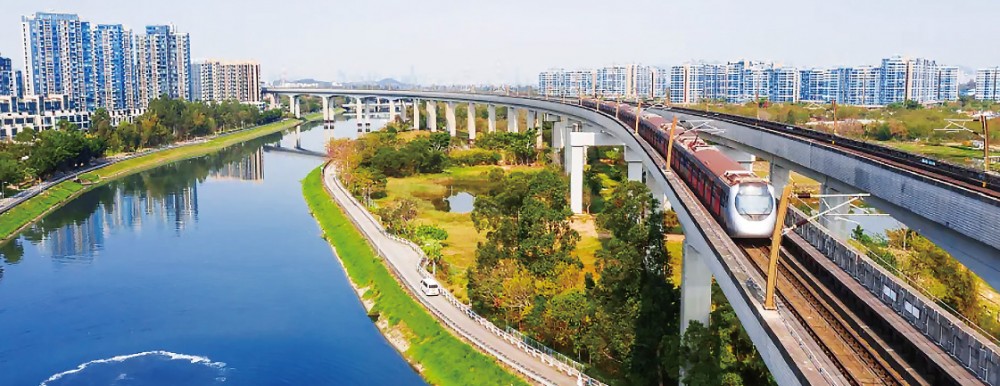 Ling also said that Hong Kong does not need to plan simply according to the development pattern of “finance in the south, I&T in the north”, which limits regional development. As a large number of jobs and places of residence gradually settle in, the Northern Metropolis will evolve from a boundary crossing into a spatial carrier for economic exchanges between Hong Kong and other cities, which could not only comprehensively change the behaviour of residents and businesses, but also further boost the development of Hong Kong and Shenzhen.
Ling also said that Hong Kong does not need to plan simply according to the development pattern of “finance in the south, I&T in the north”, which limits regional development. As a large number of jobs and places of residence gradually settle in, the Northern Metropolis will evolve from a boundary crossing into a spatial carrier for economic exchanges between Hong Kong and other cities, which could not only comprehensively change the behaviour of residents and businesses, but also further boost the development of Hong Kong and Shenzhen.
The John Lee administration stated it will “enhance speed, efficiency and quantity” in land production and housing construction, and plan to amend laws such as the Town Planning Ordinance to speed up the land development process. Agreeing with the general direction of accelerating the development of housing construction, Ling suggested the Government to further strengthen internal coordination and speed up the processing of each application for private development approval.
Development and conservation can be carried out concurrently
In Ling’s view, in the currently undeveloped land, rezoning green belts for housing construction is a more effective option. In the past, the Planning Department has identified about 150 hectares of green belts for rezoning, representing about 1% of the green belt sites in Hong Kong, and could provide about 100,000 residential units. The Planning Department is now conducting a new round of green belt study, which is expected to find more suitable land for housing development.
Ling explained that at present, some agricultural land and green belts have become brownfields due to improper use, so the development of brownfields can improve land use efficiency, increase land for development, eliminate nuisance environmental factors, and improve the surrounding environment. An example is the development of the Northern Metropolis, where one of the key directions of action is to implement a proactive environmental policy that creates environmental capacity, while restoring and conserving wetlands and increasing environmental capacity. Ling stressed that development and conservation are not opposites, as effective development can both increase the development capacity and improve the environment.
Ryan Ip: Infrastructure Boom Helps Increase Jobs and Land Supply
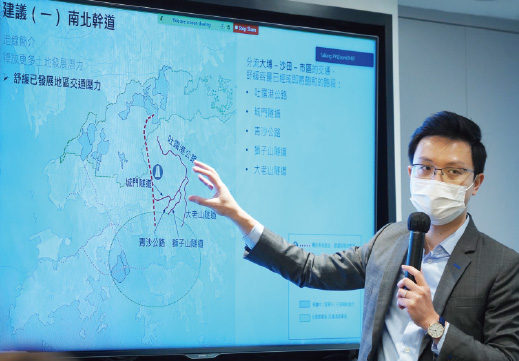
With the three major roads and three strategic railway projects attracting much attention, Ryan Ip, Vice President and Co-Head of Research at Our Hong Kong Foundation, said that transport infrastructure is crucial to unlocking the potential of land development. “Over the years, a lack of infrastructure facilities has limited the development potential of the New Territories which makes up nearly 90% of Hong Kong’s territory. Yet north-south traffic in the New Territories is now reaching full capacity, as evidenced by the Tuen Ma Line reaching 86% capacity in 2021 despite being affected by COVID-19.”
Development of two metropolis to propel economic growth
As the Northern Metropolis project will boost population growth in the area, Ip said that it is necessary to increase the transport infrastructure to relieve traffic pressure in existing built-up areas while improving the connection between the Harbour Metropolis and the Northern Metropolis. As for the detailed alignments of relevant railways and roads, he believes that further discussion is needed. He said that the alignments should take into consideration how much land potential can be unleashed and funding the construction costs using proceeds from land development.
Referring to the Lantau Tomorrow Vision and the Northern Metropolis projects, Ip said that the former can bring new space for development to the traditional Victoria Harbour metropolitan area. This includes the construction of artificial islands that will create a third central business district not far from the existing downtown areas, which can offer decanting spaces to support the chain flows arising from the redevelopment of old urban districts of Hong Kong Island and in Kowloon.
Overcome Shenzhen-Hong Kong chasm for integration into national development
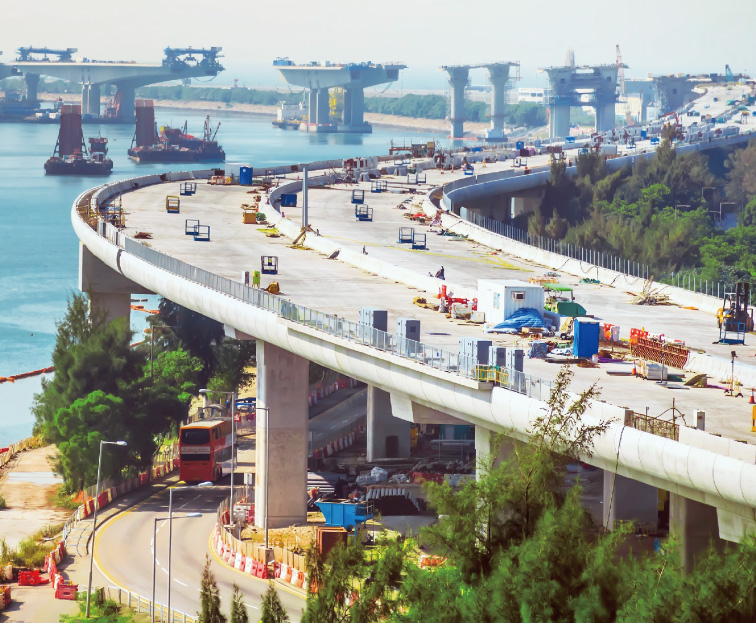 “Breaking away from the traditional model of urban planning that has its vision mainly focused on Central District, the Northern Metropolis also cuts through the chasm between Shenzhen and Hong Kong to give the New Territories a strategic blueprint.” Ip said that the Northern Metropolis, with innovation and technology (I&T) industries as its economic engine, can also enable Hong Kong to better integrate into overall national development by strengthening cooperation between Hong Kong and Shenzhen.
“Breaking away from the traditional model of urban planning that has its vision mainly focused on Central District, the Northern Metropolis also cuts through the chasm between Shenzhen and Hong Kong to give the New Territories a strategic blueprint.” Ip said that the Northern Metropolis, with innovation and technology (I&T) industries as its economic engine, can also enable Hong Kong to better integrate into overall national development by strengthening cooperation between Hong Kong and Shenzhen.
Regarding the influx of a large number of infrastructure projects, some people said that it may lead to shortages of manpower and cost pressures. Ip believes that the cost overruns or delays in the completion of Hong Kong’s large-scale infrastructure projects in recent years have generally been due to the concurrent launch of multiple large-scale contracts that resulted in shortages of materials and manpower, thereby causing the soaring prices and rental costs of labour, building materials and machinery. “Moreover, the Government’s response to the epidemic has led to a sharp increase in expenditures and the possibility of three consecutive years of fiscal deficits and declines in fiscal reserves, which have had some impact on the implementation of infrastructure projects.”
Bring in private market forces to facilitate financing arrangements
To cope with the huge initial expenditures for infrastructure construction, Ip suggested the Government to judiciously prioritise the infrastructure projects and set a specific timetable for them. This will not only help the construction industry develop more healthily, but also increase public and market confidence in the projects. “The Government could consider bringing in private market forces in order to draw on relevant resources and experiences while sharing development risks, thereby reducing cash flow pressures and facilitating financing arrangements.”
Ip stressed that the launch of these infrastructure projects will help reshape Hong Kong, and in the future, could provide sufficient land resources for the development of creative industries, scientific research and other industries that are currently constrained by land shortages, thus creating more job opportunities. “Besides saving time for commuters, transport infrastructure can also bring other positive benefits. Similarly, constructing a well-connected transport network will enable land to support large-scale development for effectively achieving economies of scale and formation of industrial clusters.”




